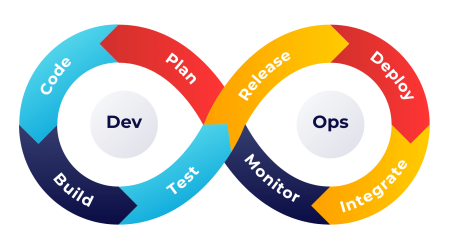Virtual Team Model (VTM): Revolutionizing Modern Workspaces
The Virtual Team Model (VTM) is not just a trend; it’s a paradigm shift revolutionizing companies’ operations. As organizations around the globe embrace this model, it’s clear that virtual teams are becoming an integral part of the corporate ecosystem. This blog gives a detailed exploration of the Remote Team Model, its benefits, challenges, and best practices for implementation.
Understanding the Virtual Team Model
A Virtual Team Model involves a group of professionals working together from different locations connected through digital technology. Unlike traditional teams confined to a single office space, remote development teams leverage communication tools, collaboration software, centralized VPS and cloud-based platforms to achieve their goals.
Critical Components of a Remote Team
- Digital Communication Tools: Platforms like Slack, Microsoft Teams, and Zoom facilitate real-time communication, ensuring team members stay connected.
- Collaboration Software: Tools like Trello, Asana, and Monday.com help in project management and task allocation.
- Cloud Storage: Some services like Dropbox and Google Drive deliver secure storage solutions that are accessible from anywhere.
Top Benefits of the Remote Team Model
- Access to Global Talent: One of the most important advantages of VTM is the ability to hire the best talent, regardless of location. This opens up a large pool of skilled professionals.
- Cost Efficiency: By eliminating the need for physical office space and reducing overhead costs, companies can allot resources to other essential areas, such as innovation and employee development.
- Increased Productivity: Surveys have proved that remote employees usually experience higher productivity due to fewer distractions and a better work-life balance.
Critical Challenges of Implementing VTM
While the benefits are substantial, the Virtual Team Model presents several challenges that organizations must address to ensure success.
- Communication Barriers: Without face-to-face interactions, misunderstandings and miscommunications can occur more frequently.
- Cultural Differences: Virtual teams often comprise members from diverse cultural backgrounds, leading to potential conflicts and misunderstandings. Promoting cultural awareness and sensitivity is crucial.
- Technology Dependence: Virtual teams rely heavily on technology, making them vulnerable to technical issues and cybersecurity threats. Implementing robust IT support, fast NVMe disk storage and security measures is vital.
Best Practices for Effective Virtual Teams
- Defined Roles and Responsibilities: Clearly outline each team member’s roles, responsibilities, and expectations. This clarity helps in avoiding confusion and ensures accountability.
- Foster a Strong Team Culture: Promote a culture of trust, respect, and collaboration. Encourage remote team fellows to share personal adventures and celebrate successes together.
- Monitor Performance: Regularly assess team performance and provide constructive feedback. Use performance metrics and KPIs to track progress and identify areas for improvement.
Case Study: Successful Implementation of VTM
One notable example of the successful implementation of the Virtual Team Model is Automattic Inc., the company behind WordPress.com.
Automattic Inc. has been a fully distributed company since its inception, with over 1,200 employees working remotely from more than 70 countries.
The company attributes its success to its strong communication culture, investment in technology, and commitment to inclusivity and diversity.
Offshore teams can provide support around the clock, providing continuous work coverage 24/7, due to different time zones. This model ensures that projects can progress uninterrupted, as team members from different parts of the world contribute during their respective working hours.[/vc_column_text][/vc_column][/vc_row]













Comments (3)
Hi, I do believe this is a great blog. I stumbledupon it 😉 I will revisit oonce again since I
bookmarked it.
Great article on how the virtual team model is transforming the way we work! It’s fascinating to see how this approach can boost flexibility and efficiency while reducing costs. The examples provided really help to highlight the benefits of adopting a virtual team structure. Thanks for sharing!
This article provides a great overview of the Virtual Team Model (VTM), highlighting its benefits like access to global talent, cost savings, and increased productivity.